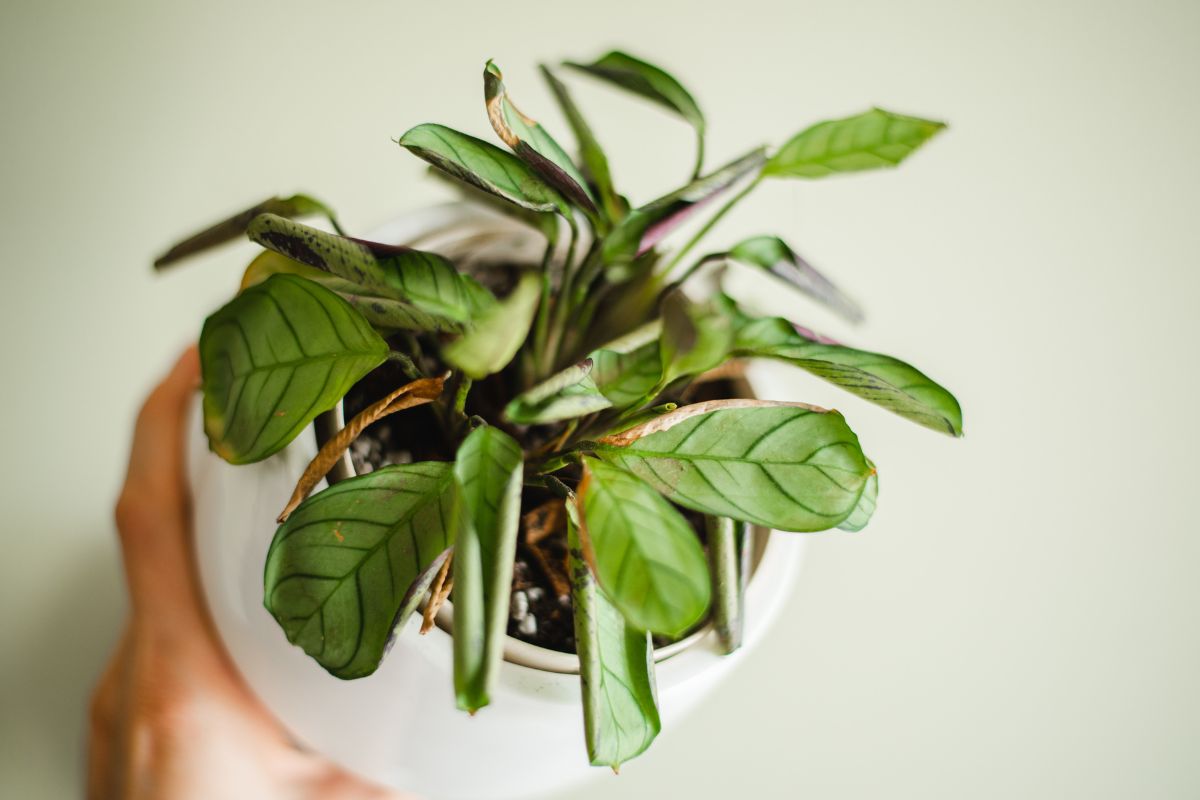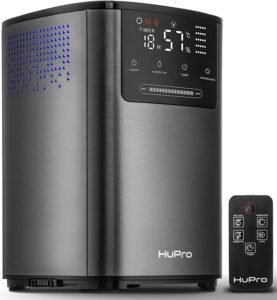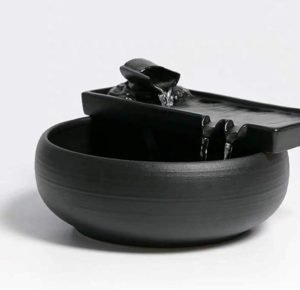One of the telltale signs that your plant is dehydrated is curling leaves. 💔
Certain plants, particularly those with wide, flat leaves, constrict their leaf tissue to use their internal moisture more efficiently (by spreading less over more area).
Plants rely on a certain amount of water vapor in the air to meet their hydration needs; some more than others. Many houseplants are from tropical regions originally, and their humidity preferences may be higher than the average humidity in any given area or home.
Knowing the humidity requirements of your plants is the first step in making sure they’re comfortable in their growing environments.
If the indoor humidity levels are too low in your space, there are plenty of options to choose from to raise the indoor air’s moisture level, and some tactics will be better for your particular plants than others depending on how much moisture your plant types need.
Low humidity symptoms in plants
Many houseplants come from humid areas with high humidity levels and warm air temperature year-round, which is why they make such good indoor plants.
Some of these types of plants have smaller, shallower, and finer roots that don’t store much moisture since they’re used to being able to absorb lots of moisture from the air through their leaves. These smaller root systems tend to do best in low soil moisture levels and become at risk of root rot if overwatered, so moisture from the air is key for these plants to meet their needs.
Those plants that require higher-than-average humidity (which will vary by location- more on that later!) will show certain signs of stress related to a relatively low humidity level. These symptoms include:
- Curled leaves – When plants don’t receive the amount of water they need, they have to tap their internal reserves of moisture to keep their energy flowing. To be most efficient with what they have, big leaves will curl as the plant’s tissue constricts to reduce surface area and moisturize more cells with less water.
- Wrinkly leaves and stems – Similar to leaf curling, a plant’s leaves and stems may start to wrinkle to be efficient with their diminishing internal stores of moisture.
- Drooping and wilting – Stems and leaves of soft vegetation get their firmness from water, which allows the plant to hold itself up. When a plant has to tap its internal stores of moisture as it dehydrates, the plump tissue becomes folded, compressed, and thin, and the stems and leaves droop and wilt as they become weaker.
- Crisping edges or drying out – As the plant dehydrates (tapping the edges of the leaves first), it will also produce less chlorophyll, and process less energy in general, unable to keep the plant vibrant and green. The color will fade, and if a plant is dehydrated enough, its yellow and brown carbon components remain as the life-giving moisture is depleted, resulting in browned edges and crisp, dry leaves.
- Dry soil – If the potting soil is powdery to the touch and reads dry with a moisture meter, then it could use a good drink of water by any means.
What is “low humidity” for plants?
Each type of plant has a different tolerance for low humidity levels. While this may mean something different for each plant, in general, low humidity refers to levels below 30%.
Beyond this general definition is some variation: the relative humidity refers to the amount of moisture being held in the air given the temperature. Warm air holds more moisture, while cool air holds less.
Dry air (no matter the temperature), which has less water vapor, evaporates moisture more quickly than air that has lots of space taken up by water molecules already (a higher relative humidity is closer to saturation, or the most water vapor air can hold at any given temperature).
Tropical plants from wet areas are used to moisture in the air, so their leaves aren’t adept at preventing moisture loss in the event of low humidity. In contrast, low humidity plants like succulents have dense, waxy leaves that hold on to moisture in habitually dry environments (and in the case of cacti, no leaves at all). Plants with woody stems and large root systems are good at moisture storage as well, and are able to tolerate more heat stress and longer periods of dryness.
A plant’s hardiness is an important piece of information in understanding its care requirements. The hardiness zone is the location a plant comes from, informed by the lowest annual temperature (but not humidity).
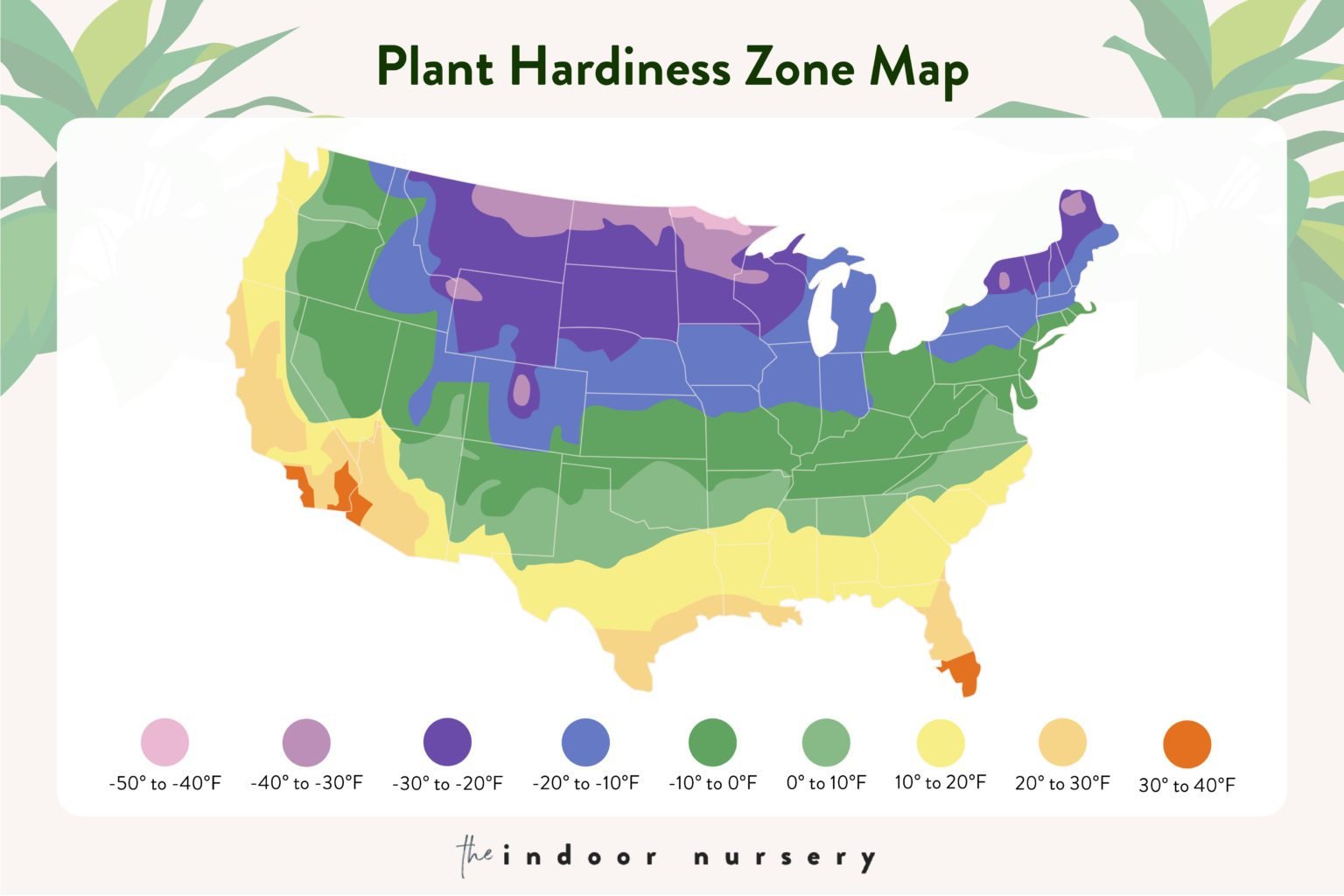
Knowing the plant’s hardiness zone, however, is a clue to its humidity requirements, and by looking at the type of leaves the plant has, you can make an educated guess on its air moisture needs.
A plant with wide, flat leaves from a tropical or subtropical hardiness zone (generally 8 or 9 and above) usually is one from a wet location that will curl in low humidity.
Common houseplants with leaf curl in low humidity
Most humidity-loving plants with wide, flat leaves that are particularly sensitive to low humidity levels come from moist, tropical environments where they get a large amount of their moisture requirements from the air.
Rubber plants are a good example of this. My rubber plant in Queensland, Australia had thick, broad leaves that loved the humidity there. My rubber fig while living in Guadalajara, Mexico, however, curled upward in the dry and dusty environment.
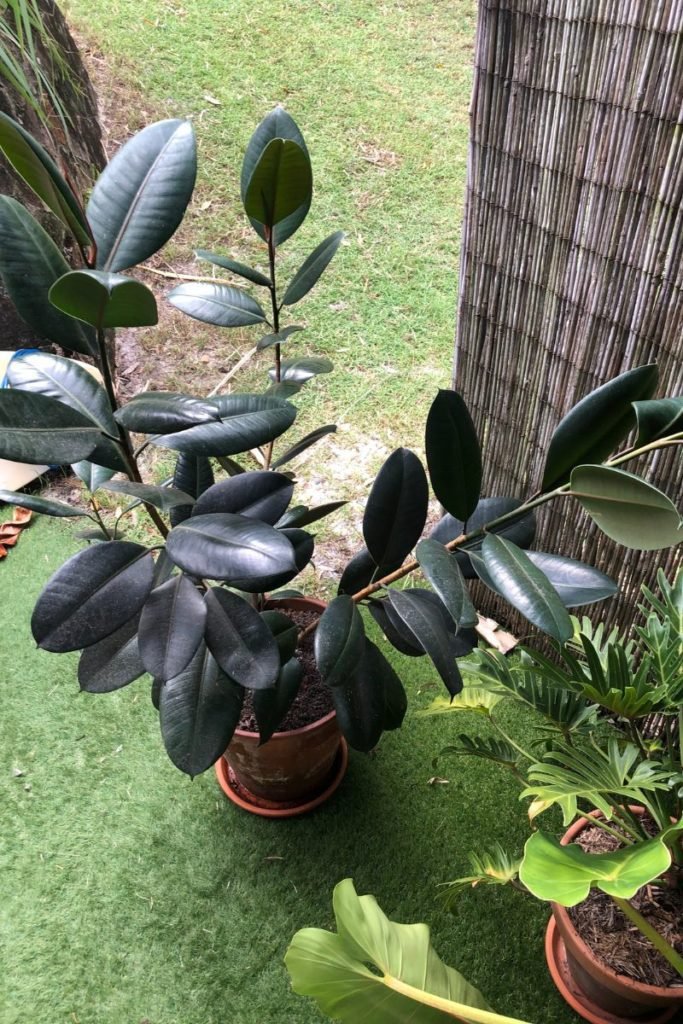
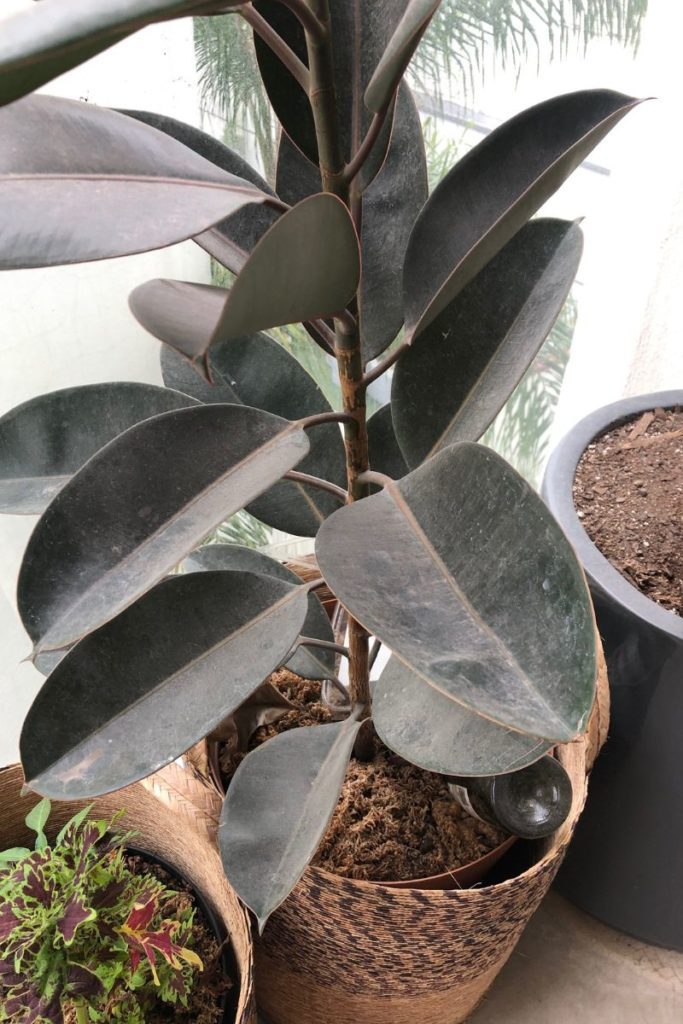
However, this doesn’t mean plants with thick leaves, like aloe or jade, won’t curl and wrinkle in too-low of humidity. The evergreen nature of tropical plants is what makes them great indoor plants, but if our homes are too dry, they will have a hard time thriving.
The following is a list of some of the moisture loving plants that show dehydration by curling their leaves and require average to above average humidity levels.
These are all from rainforest ecosystems:
- Peperomia Or Baby Rubber Plant (40-60%) – Tropical Americas, Peru
- Snake Plant (40-60%) – West Africa
- Rubber Plant (40-60%) – Southeast Asia, India
- Calathea (50-60%) – South America, Brazil (check out this discussion on Reddit about a dehydrated prayer plant in low humidity)
- Philodendron (50-70%) – Tropical Americas (This philodendron on Reddit is in poor health, and a commenter suggests it is suffering from cold and dry air)
- Pothos (50-70%) –Indonesia
- Arrowhead Plant (50-70%) – Central America
- Monstera (60-80%) Tropical Central America (this Redditor requested some advice on a monstera whose leaves were curling and received a great comment explaining the effects of low humidity)
- Alocasia (60-80%) – South-East Asia
How to fix low humidity for houseplants
If you’re noticing your plant’s leaves are starting to curl, but the plant isn’t being over- or underwatered, consider whether the air is too dry. The season, your location, the light, the size of the plant, the indoor temperature and ventilation, as well as the number of plants you have all contribute to the humidity level in a given room.
The easiest way to tell if you need to adjust your indoor air is by checking a hygrometer to measure the humidity. These come in digital and analog forms, and many humidifiers have them built-in with timer settings.
Here, we’ll go over some of the options you have to create a more humid environment for growing plants indoors:
- Use a humidifier
- Group plants together
- Place plants in humid rooms
- Place a glass of water near a sunny window
- Hang laundry inside
- Boil water without lids
Use a humidifier
A humidifier is one of the easiest ways to control the amount of humidity in a room. With digital moisture-level reading and automatic settings, a humidifier is an investment in the health of your plants (and your own as well, since dry air isn’t great for humans, either!)
This is particularly true if you have a large number of plants that have high humidity needs, or if you have one that has a particularly high level of need (like a monstera or alocasia). They’re particularly useful in a grow room as well.
Group plants together
The process by which plants release moisture through pores on their leaves (stomata) is known as transpiration. When plants are grouped together, they can benefit from each other’s transpiration, which increases the localized humidity, preventing moisture loss and providing water vapor to be absorbed as necessary.
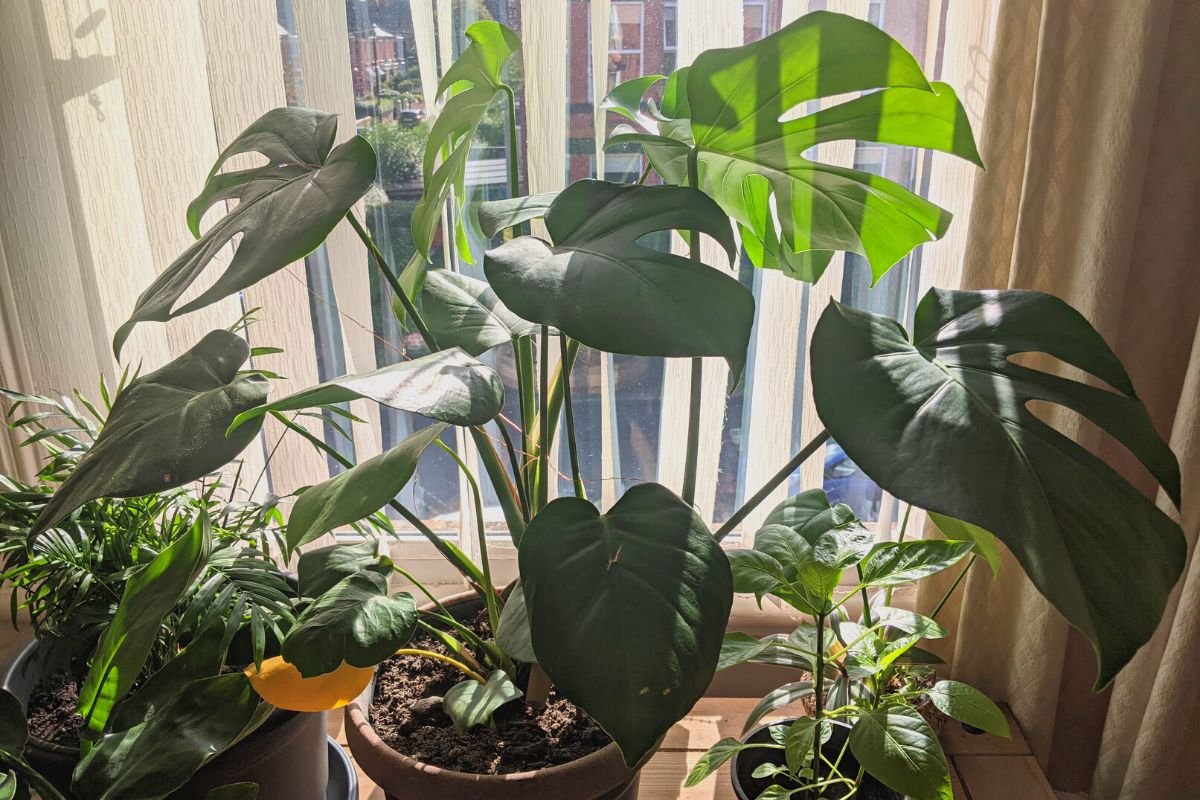
Be sure to not put them so close together that they touch to prevent moisture buildup, shade, mildew, and pest attraction (or exchange).
Place plants in humid rooms
Humidity-loving plants can be placed in areas that other plants wouldn’t prefer to be, like in a kitchen or near a shower.
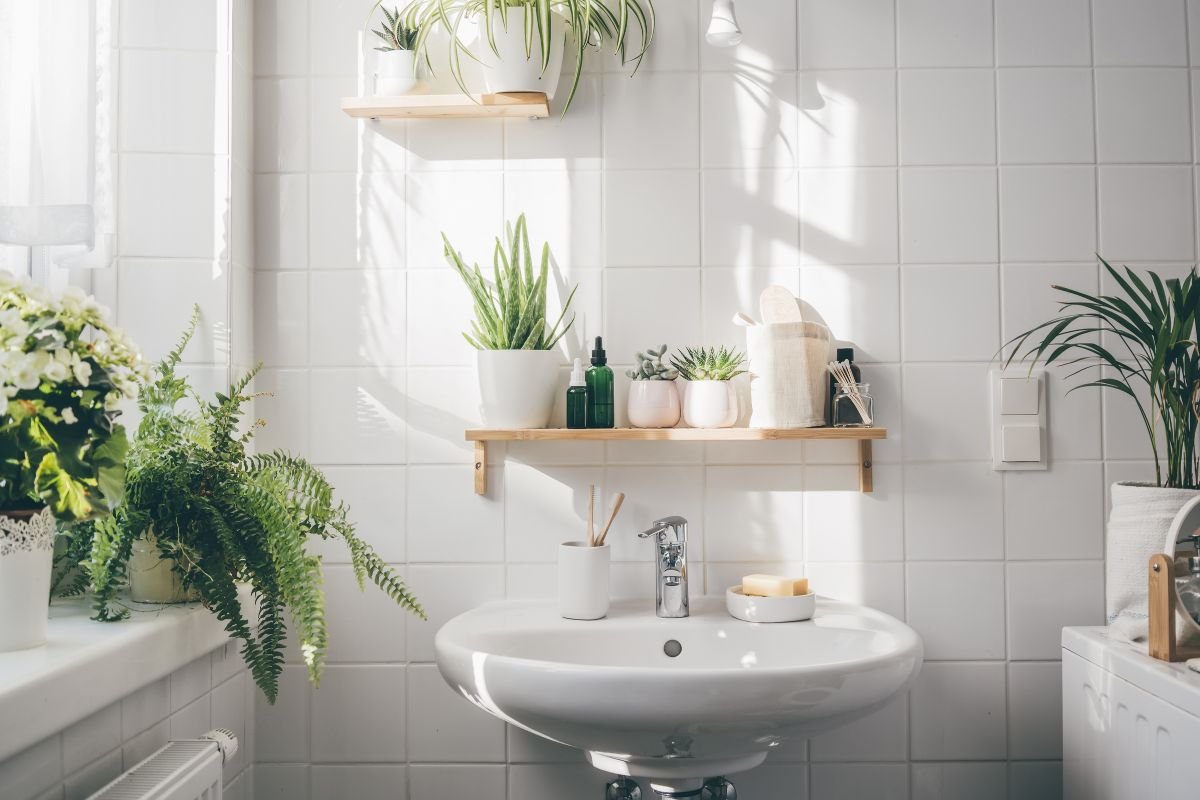
Leaving the bathroom door open while showering is a good way to spread humidity throughout your space, or by opening the dishwasher after it runs to let the steam out while the dishes dry.
Place a glass of water near a sunny window
A low-tech but effective way to get some moisture into the air is to put a glass or bowl of water near a sunny window. As the water evaporates, it will spread through the air in the room and become available for your plants to absorb and benefit from.
You can also put a cute little water fountain next to the window and create an ambiance.
Hang laundry inside
Like a glass of water, keeping the door open while showering, and opening the finished dishwasher to let the steam out, drying laundry indoors is a good, passive way to add water vapor to the air. It’s also a great way to reduce your energy consumption and be a little gentler on your clothes.
Boil water without lids
Cooking is another opportunity to release some moisture into the air: when you boil water for pasta, rice, or to steam vegetables, leaving the lid off, or on about halfway, will release moisture into the air while you cook. Allowing air to escape from the pot will prevent boiling over, as well! It may take just a little longer to boil, but your air will be more comfortable for your plants and yourself.
more about humidity
- The 6 Best Dehumidifiers For Grow Tents
- 7 Best Hygrometers For Indoor Plants
- 9 Best Plant Humidifiers For Indoor Jungle Vibes
- The best grow tent humidifier for indoor gardening
- How to increase humidity in a room with indoor plants
- How to fix low humidity leaf curl for humid-loving plants
- Where to place humidifier for plants (farther than you think)

